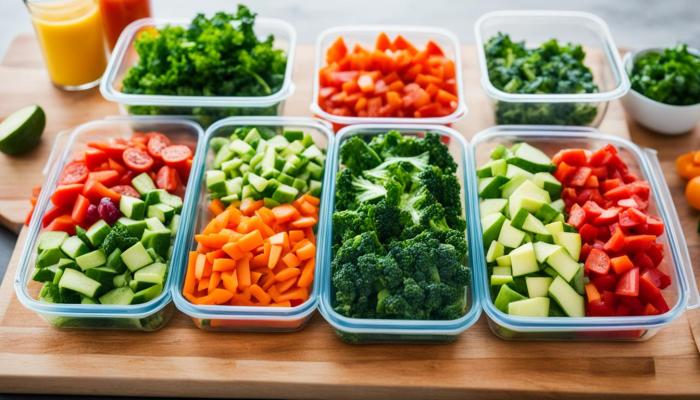Meal Prep Ideas are not just about saving time, they’re a lifestyle choice that can transform the way you eat. Get ready to discover the secrets behind efficient meal prepping and how it can revolutionize your approach to food.
Benefits of Meal Prep Ideas

Meal prep is a game-changer when it comes to saving time and staying on track with your health goals. By preparing your meals in advance, you can enjoy the following benefits:
Time-saving
- With meal prep, you can cook and portion out your meals for the week in one go, saving you time during busy weekdays.
- No more scrambling to figure out what to eat or spending hours in the kitchen every night – just grab your prepped meal and go!
Portion control and healthier eating habits
- Meal prep allows you to control your portion sizes and choose nutritious ingredients, leading to better eating habits and weight management.
- By having healthy meals ready to go, you’re less likely to reach for unhealthy fast food or snacks when hunger strikes.
Stress reduction
- Knowing that your meals are already prepared can help reduce stress and anxiety during the week, giving you more time to focus on other priorities.
- Meal prep takes the guesswork out of meal planning and ensures that you always have a nutritious option available, even on hectic days.
Meal Prep Tools and Containers
When it comes to meal prepping, having the right tools and containers can make a world of difference in keeping your meals fresh and organized. Let’s take a look at some essential tools needed for effective meal prepping and compare different types of containers suitable for this purpose.
Essential Meal Prep Tools
- Sharp knives: A good set of knives is essential for chopping, slicing, and dicing ingredients efficiently.
- Cutting board: Invest in a sturdy cutting board to protect your countertops and make meal prep easier.
- Measuring cups and spoons: Accurately measuring ingredients is crucial for successful meal prepping.
- Food scale: For precise portion control and accurate measurements, a food scale is a handy tool to have.
- Storage containers: Having a variety of containers in different sizes will help you store and portion out your meals effectively.
Types of Meal Prep Containers
- Plastic containers: These are lightweight, affordable, and come in various sizes. Look for BPA-free options for safe food storage.
- Glass containers: Durable and non-toxic, glass containers are perfect for reheating meals in the oven or microwave.
- Mason jars: Great for salads, overnight oats, and layered meals, mason jars are convenient and portable.
Choosing the Right Containers
- Consider the type of meal: Choose containers that are suitable for the type of meal you are prepping. For soups and liquid-based dishes, opt for leak-proof containers.
- Portion control: Select containers that allow you to portion out your meals according to your dietary needs and goals.
- Storage space: Make sure the containers fit well in your fridge or freezer and are stackable for easy storage.
- Microwave and dishwasher safe: Look for containers that are safe to use in the microwave and dishwasher for quick reheating and easy cleaning.
Meal Prep Recipes

Looking to spice up your meal prep game? Here are some easy meal prep recipes for beginners that are sure to keep you satisfied throughout the week. Whether you’re a meat lover, vegetarian, or vegan, there’s something here for everyone. Let’s get cooking!
Balanced Meals for Meal Prep
- Start with a protein base such as grilled chicken, tofu, or lentils to keep you full and energized.
- Add a variety of colorful vegetables like bell peppers, broccoli, and carrots for essential vitamins and minerals.
- Incorporate healthy fats like avocado, nuts, or olive oil to support brain function and overall health.
- Include complex carbohydrates such as quinoa, sweet potatoes, or whole grains for sustained energy throughout the day.
Adapting Recipes for Dietary Restrictions
- For gluten-free options, swap out regular pasta for zucchini noodles or gluten-free grains like rice or quinoa.
- If you’re dairy-free, use dairy-free milk alternatives like almond or coconut milk in recipes that call for dairy.
- Vegetarian or vegan? Substitute meat with plant-based proteins like tofu, tempeh, or legumes for a nutritious alternative.
- For those with allergies, be sure to read labels carefully and use allergen-free ingredients to avoid any potential reactions.
Meal Prep Planning
Planning your meals for the week ahead can help you save time and stay on track with your healthy eating goals. By designing a meal prep schedule, organizing a grocery list, and efficiently managing your meal prep tasks, you can make the process seamless and stress-free.
Design a Meal Prep Schedule, Meal Prep Ideas
- Choose a day of the week to plan and prepare your meals.
- Decide on the number of meals you want to prep for each day.
- Allocate time slots for meal prepping in your schedule.
- Select recipes that are easy to batch cook and store well.
Organize a Grocery List
- Review your meal prep schedule to determine the ingredients needed.
- Create a detailed grocery list based on the planned meals.
- Check your pantry and fridge for items you already have to avoid duplicates.
- Consider buying in bulk for staple ingredients to save money in the long run.
Efficiently Organize Meal Prep Tasks
- Prioritize tasks based on cooking times and preparation steps.
- Start with prepping ingredients that require longer cooking times.
- Utilize multitasking by cooking multiple components simultaneously.
- Store prepped ingredients in labeled containers for easy access during the week.